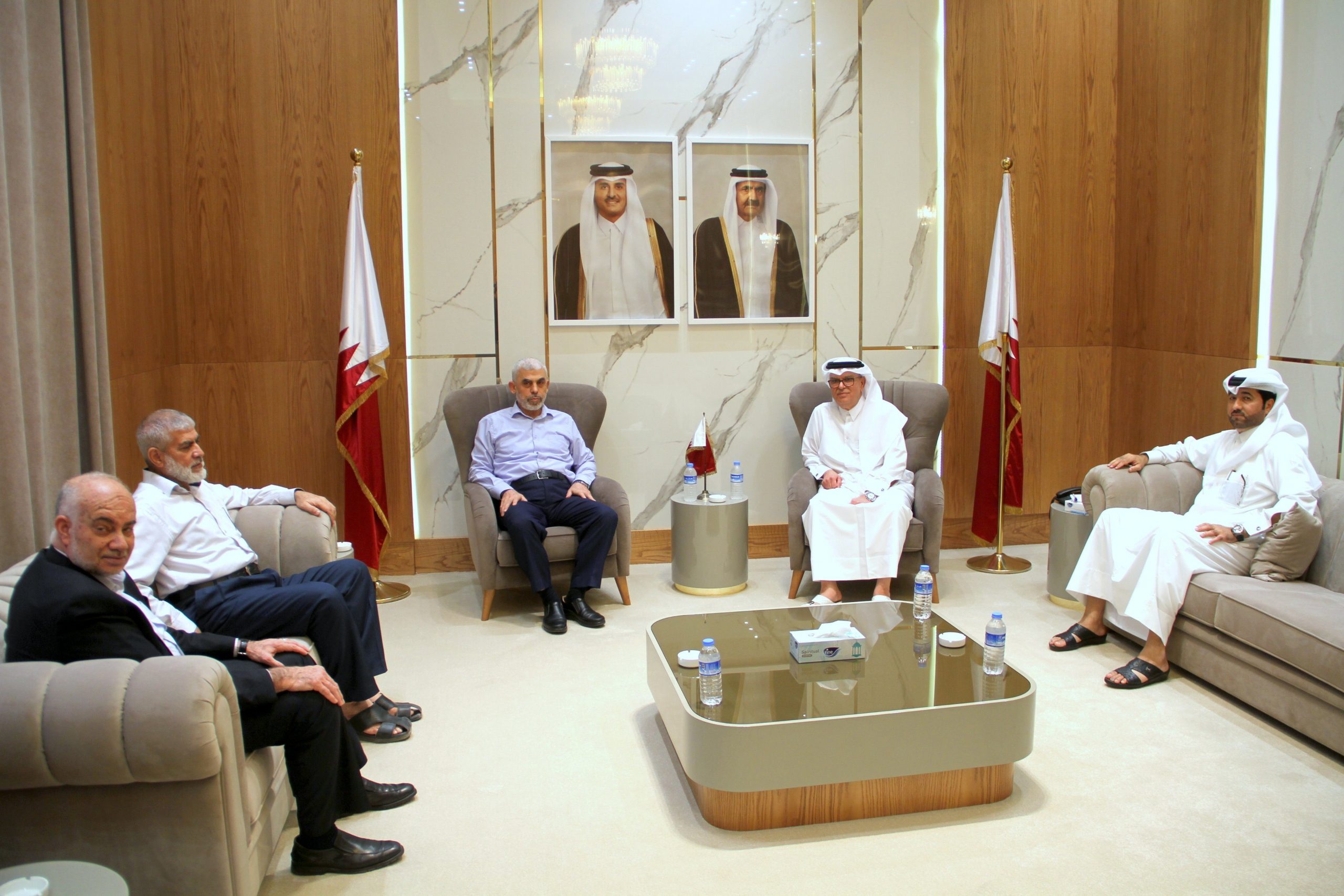Reports from last week said Doha has allegedly refused to resume the transfer of funds to Gaza using the new Israeli mechanism without protection from the United States.
Qatar’s envoy to Gaza has returned to the besieged Strip, Al Quds news agency reported on Monday, assuring that his country is keen on bringing urgent humanitarian and relief aid to the enclave as soon as possible.
Chairman of Qatar’s Gaza Reconstruction Committee Ambassador Mohammed Al Emadi met with Hamas’ Gaza leader Yahya Sinwar and ensured Doha’s support to ensure all parties commit to a ceasefire without the resumption of any escalations in the area, following a 11-day deadly Israeli offensive in May.
The Qatari official, who arrived in Gaza on Sunday for the first time since March, also said that the Gulf state will continue providing support to Palestinians at all levels.
Al Emadi’s visit comes a week after reports stated that Qatar had allegedly refused to resume the transfer of funds to Gaza using the new Israeli mechanism without protection from the United States.
The reports claimed that the Gulf state has instead requested the arrangement of a new mechanism in a four-way meeting with the US, Israel, and the UN.
Meanwhile Arabi21 reported on Monday that Israel’s Kan channel reported developments in the ongoing indirect negotiations between Hamas and Tel Aviv with Egyptian mediation regarding the entry of Qatari funds.
Qatar ‘requests US protection’ to transfer aid to Gaza: reports
Israeli sources confirmed to the broadcaster that the new Naftali Bennett government “agreed to allow the entry of Qatari grants again, after discussing it in the mini-ministerial council provided that the money is not transferred in bags to Gaza”.
Commenting on the latest development, Hamas spokesperson Abdel-Latif Al-Qano said that the group “will continue to pressure the occupation to achieve the demands of our people and achieve their goals”.
“It is the right of our people to break the unjust siege on the Gaza Strip once and for all, in order to lead a dignified life,” Al-Qano told Arabi21.
“The return of the situation to what it was before on May 11 and the initiation of implementation of the measures to break the siege are evidence of the occupation’s acquiescence,” he added, calling on mediators to intensify their efforts to ensure Israel lifts the siege on Gaza.
New aid mechanism
In May, weeks after the deadly 11-day bombardment of Gaza, Israel demanded that Qatar directly deposits all donations to the Palestinian Authority [PA] or international organisations.
Reports later said the UN stepped in to facilitate the delivery and transfer of the aid to Gaza according to a newly changed transfer mechanism, adding that the PA would no longer be involved in the transfer of the cash to the besieged enclave.
According to Arabi21, which cited Israel’s Channel 12, the Israeli cabinet held a meeting on Monday evening to discuss the mechanism for transferring up to $30 million per month to Gaza and “the new mechanism that was agreed upon with the Egyptians requires transferring the amounts through the operating Palestinian banks”.
The Qatari committee in Gaza will then receive the money from those banks and deposit it in the Postal Bank in the Strip, to be distributed later.
Per the latest agreement, Israel’s Shin Bet security service will also check 160,000 names of beneficiaries from the monetary aid to ensure that they have no affiliations with Hamas, which the apartheid state considers a terrorist organisation.
“As for the rest of the money, $10 million will be transferred to the United Nations for the purchase of fuel for the power plant, and another $10 million to the ‘cash-for-work’ project to improve the economic situation in the Gaza Strip,” added the report.
Fifteen-year siege
Gaza has been suffering from an illegal Israeli embargo since 2006 that has placed over two million Palestinians under harsh conditions that only worsened during the latest offensive.
According to the Israeli Information Center for Human Rights in the Occupied Territories [B’tselem], the entire population in Gaza requires at least 600 megawatts of electricity to ensure that it gets a 24/7 supply.
However, Palestinians living in the besieged area only receive 180 megawatts, of which 120 are directly from Israel. These are carried through 10 power lines and 60 others from Gaza’s power plant, also funded by Qatar.
As a result of the limited access, residents receive electricity in eight-hour rotations and suffer in the heat with no power, sometimes for up to 12 hours.
Israel also withholds fuel from the power plants, further limiting electricity to millions of residents and hospitals that are already struggling with the global coronavirus health crisis.
Last year, Israel stopped the fuel supply by closing the crossings with Gaza, causing the power plant to shut down within at least a week. This further reduced the Strip’s power supply until it was re-opened in September.
Israel also controls up to 90% of water sources and figures show just 10.5% Palestinians in Gaza have access to safe drinking water.
More than 96% of water in Gaza’s aquifers are not safe for consumption, forcing Palestinians to buy water at inflated prices despite their full right to access it for free.
The situation in Gaza substantially worsened during the 11-day bombardment in May, the deadliest since 2006.
More than 250 people were killed including 66 children. Israel wiped out up to 19 families from the Palestinian population registry and decimated residential and commercial tower blocks.
Follow Doha News on Twitter, Instagram, Facebook and Youtube







